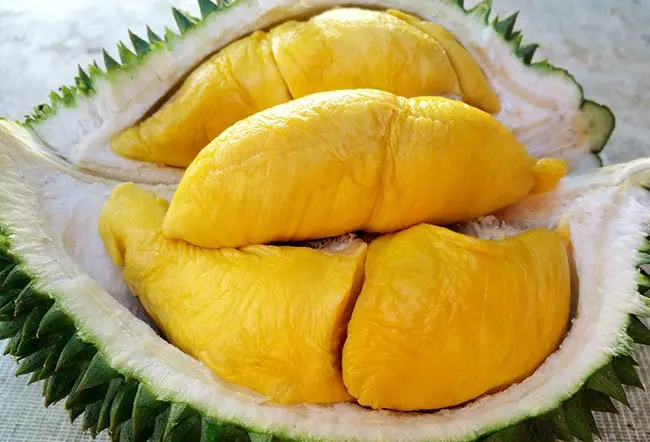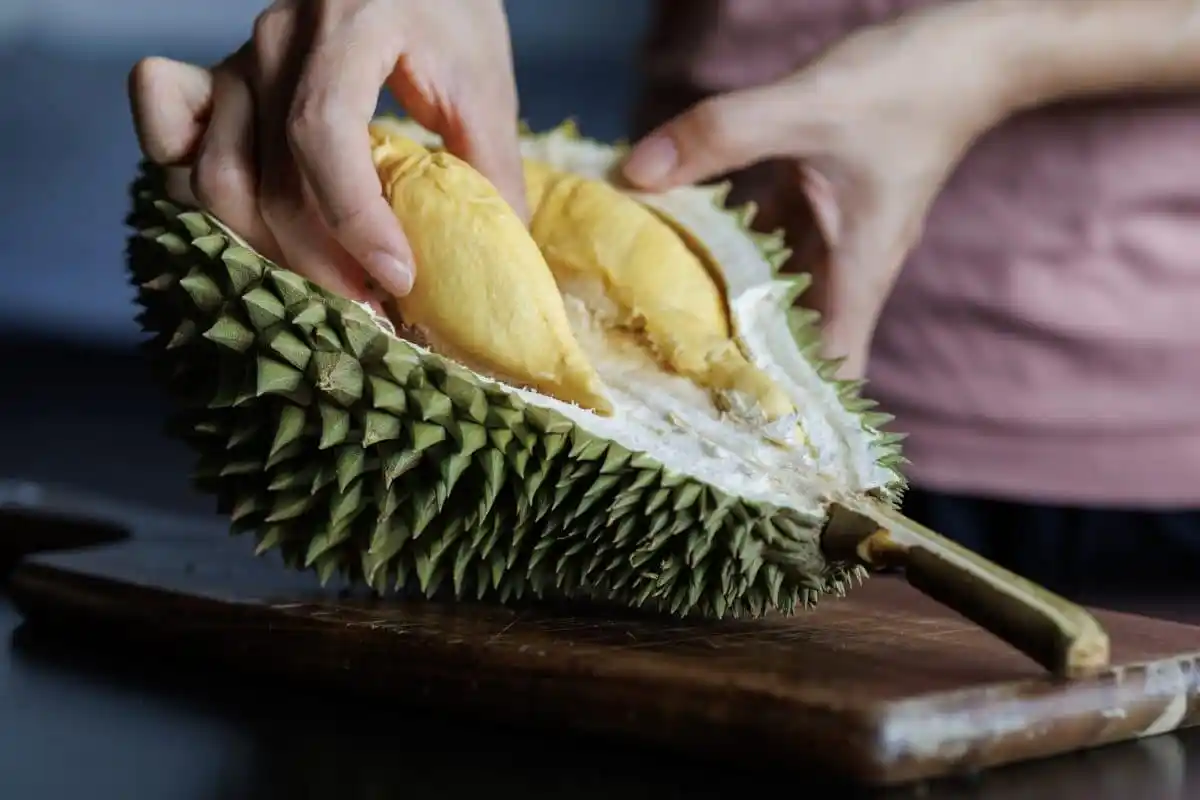
1. Introduction: Durian and Nutrition
Durian—often called the “king of fruits”—is rich in a variety of nutrients: carbohydrates, fats, fiber, vitamins (especially vitamin C and some B vitamins), potassium, and antioxidants.
However, it is relatively high in sugar and calories compared to many other fruits, which raises caution for those managing blood glucose.
2. Risks & Challenges for Diabetics
-
Blood sugar spike risk: Because durian contains significant natural sugars, eating too much or on an empty stomach can lead to a rapid rise in blood glucose.
-
Calorie load and weight gain: Frequent overconsumption can contribute to excess calorie intake and worsen insulin resistance.
-
Potassium and kidney burden: For those with kidney disease, durian’s high potassium content may pose risks.
-
Food combinations to avoid: Avoid consuming durian with alcohol, caffeine, or additional sweet fruits or desserts, which may amplify adverse metabolic effects.
-
Digestive discomfort: Excessive fiber or sugar intake may lead to bloating or constipation in some people.
3. How Much Is Safe? Portion Guidelines
-
Experts often recommend limiting to one to two small segments (about 40–60 g) per serving for diabetics.
-
Some sources even suggest no more than two seeds per day as part of a fruit allowance.
-
Avoid eating durian at night or when hungry — better to consume it 1–2 hours after a main meal, when the body’s metabolic state is more stable.
-
Always monitor one’s blood glucose before and about 1–2 hours after eating durian. If the rise is too high (e.g. > 40 mg/dL above baseline), reduce portion size or avoid.
4. Smart Pairings & Strategies
-
Combine with fiber or protein: Eating durian with unsweetened yogurt, vegetables, chia seeds, or nuts can slow glucose absorption.
-
Skip or reduce starchy foods: Don’t pair durian with rice, bread, noodles, or desserts in the same meal.
-
Stay hydrated, choose non‑caffeinated drinks: After consuming durian, drink water or non‑caffeinated, low-sugar beverages. Avoid coffee or caffeinated drinks around durian intake.
-
Exercise afterward: Light activity can help use some glucose and blunt spikes.
-
Skip durian on “high risk” days: If you’ve already eaten a high-carb meal or expect poor glucose control, it might be better to skip durian that day.
5. When to Avoid Durian
-
If blood glucose is already poorly controlled, or you are in a state of hyperglycemia.
-
If you have advanced kidney disease or other conditions where high potassium is problematic.
-
If you experience digestive upset, bloating, or other intolerance symptoms when consuming durian.
-
Avoid combining with alcohol or caffeine.
6. Summary Advice & Practical Tips
-
Durian need not be completely off-limits for many diabetics—but “moderation is key.”
-
Keep a very small portion, always paired smartly, and monitor your body’s response.
-
Avoid risky combinations (starch, sugar, alcohol, caffeine).
-
Work with a nutritionist or endocrinologist to find a safe “limit” for your individual case.


You must be logged in to post a comment.